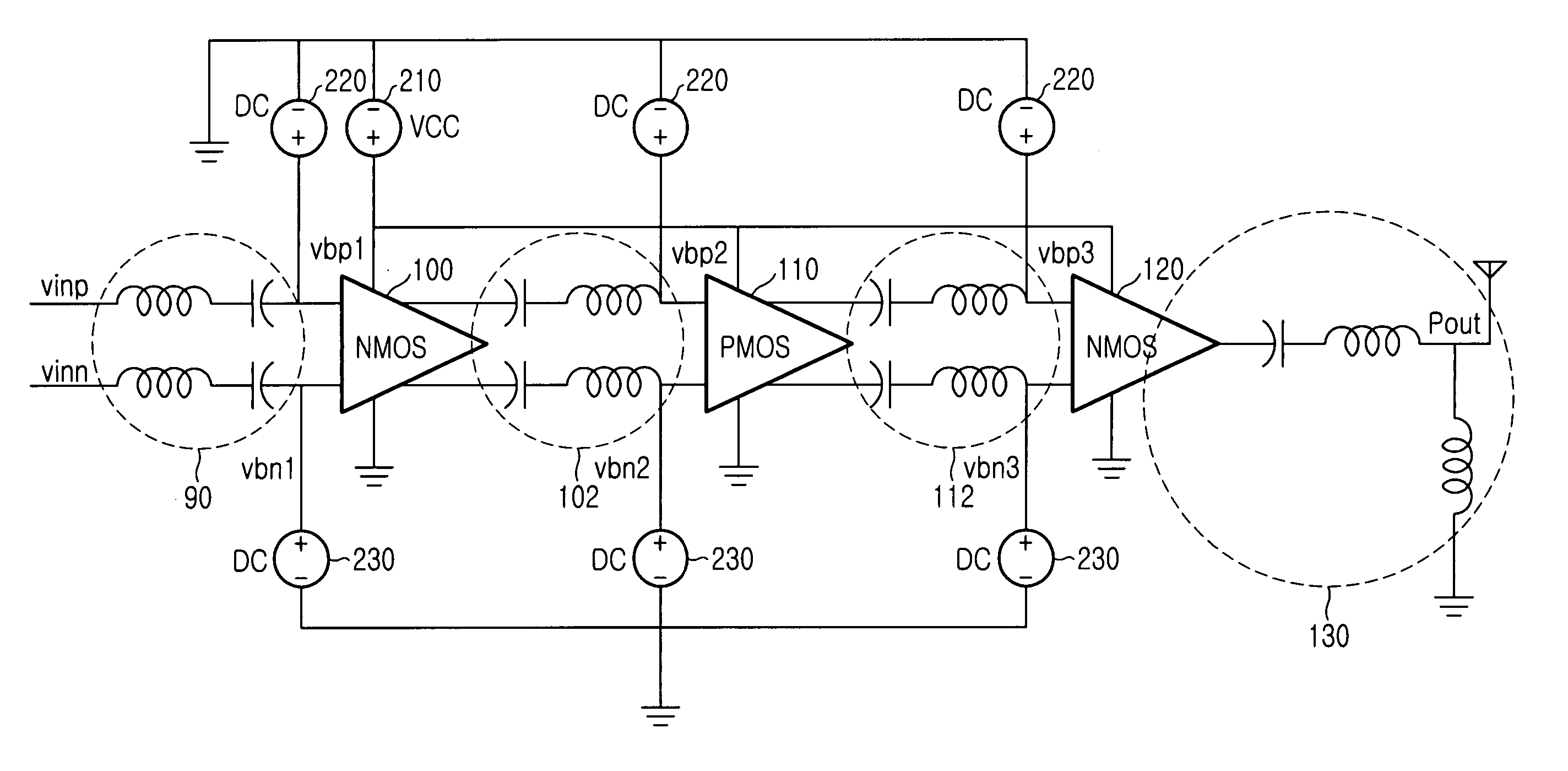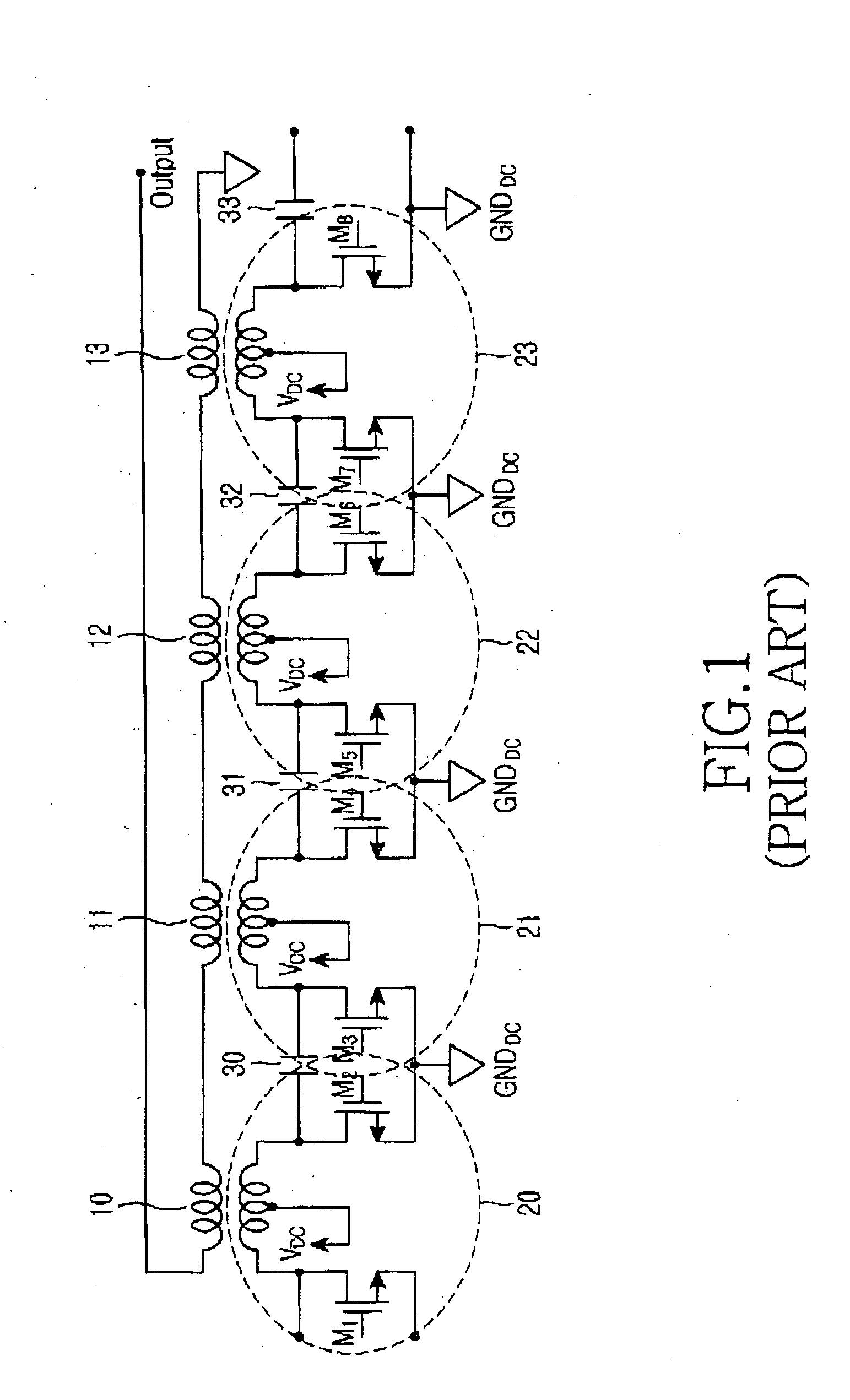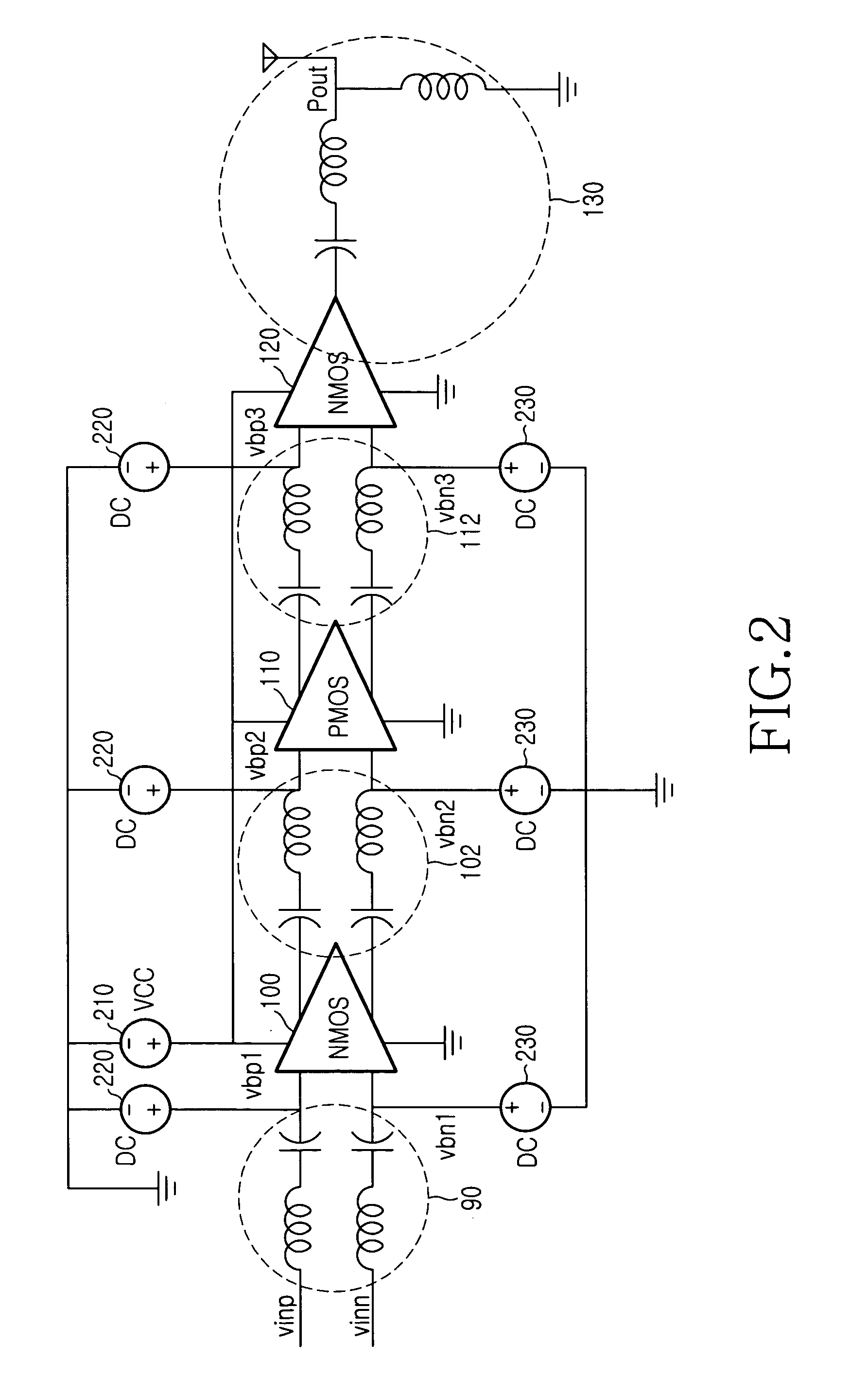Power amplifier for a transmitter
a power amplifier and transmitter technology, applied in the direction of amplifiers, amplifiers with semiconductor devices only, amplifiers, etc., can solve the problems of increasing the footprint and loss, difficult to realize the conventional power amplifiers by the coms technology, and difficult to realize the amplifiers of the gaas type and the inpgaas typ
- Summary
- Abstract
- Description
- Claims
- Application Information
AI Technical Summary
Benefits of technology
Problems solved by technology
Method used
Image
Examples
Embodiment Construction
[0025] Hereinafter, preferred embodiments of the present invention will be described with reference to the accompanying drawings. In the following description, a detailed description of known functions and configurations incorporated herein will be omitted when it may make the subject matter of the present invention rather unclear.
[0026]FIG. 2 is a schematic diagram of the power amplifier for the transmitter according to one embodiment of the present invention, and FIG. 3 is a schematic diagram of each stage in the power amplifier according to one embodiment of present invention.
[0027] The present invention provides a power amplifier having a Si-CMOS pseudo-differential structure. Referring to FIG. 2, the power amplifier according to an embodiment of the present invention includes three pseudo-differential amplifiers 100, 110 and 120 which correspond to an NMOS amplifier 100, a PMOS amplifier 110 and an NMOS amplifier 120. These three amplifiers 100, 110 and 120 are interlinked in...
PUM
 Login to View More
Login to View More Abstract
Description
Claims
Application Information
 Login to View More
Login to View More - R&D
- Intellectual Property
- Life Sciences
- Materials
- Tech Scout
- Unparalleled Data Quality
- Higher Quality Content
- 60% Fewer Hallucinations
Browse by: Latest US Patents, China's latest patents, Technical Efficacy Thesaurus, Application Domain, Technology Topic, Popular Technical Reports.
© 2025 PatSnap. All rights reserved.Legal|Privacy policy|Modern Slavery Act Transparency Statement|Sitemap|About US| Contact US: help@patsnap.com



